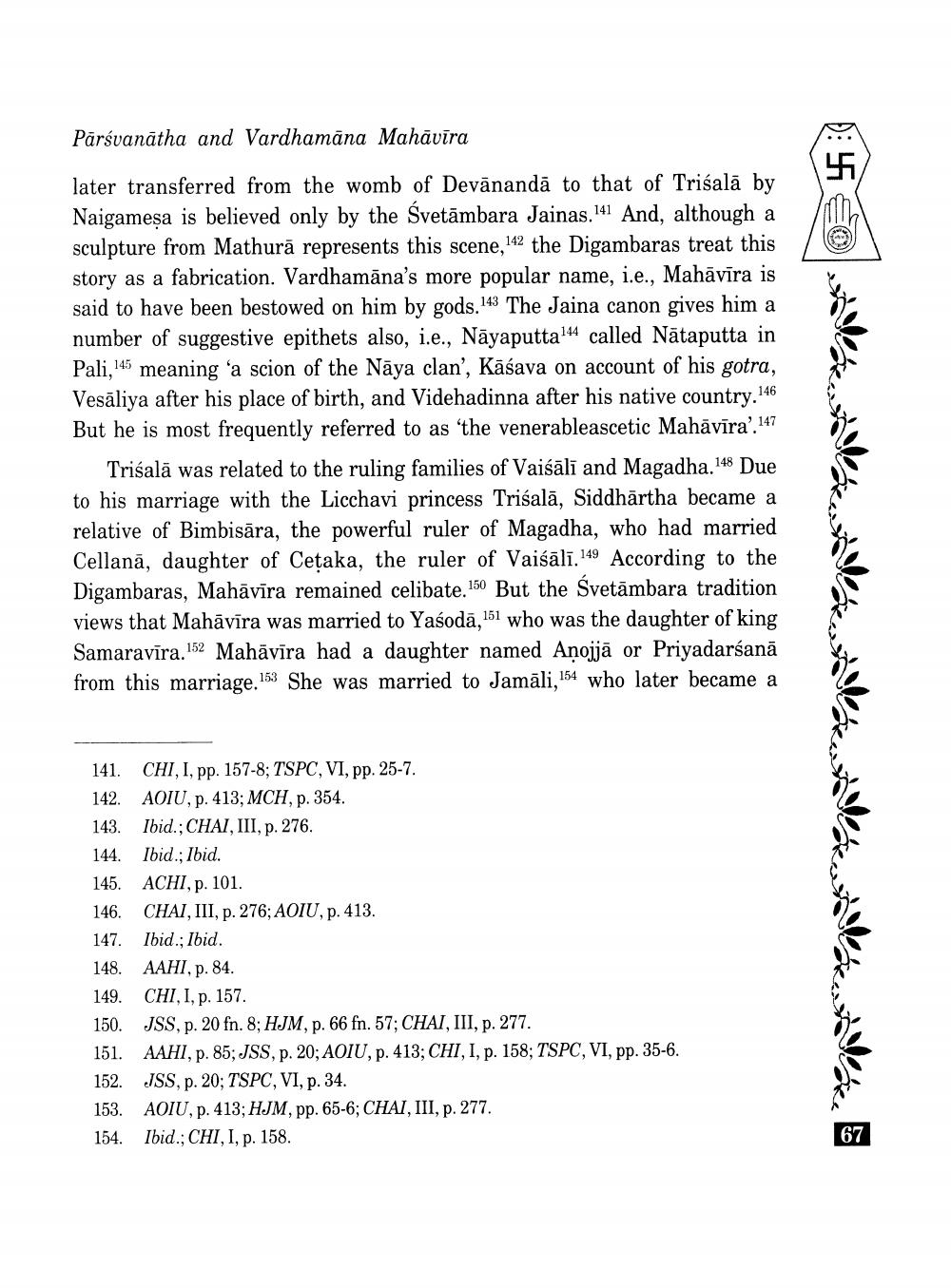________________
Pārsvanātha and Vardhamana Mahāvīra
later transferred from the womb of Devānandā to that of Trisalā by Naigamesa is believed only by the Svetämbara Jainas. 141 And, although a sculpture from Mathurā represents this scene, 142 the Digambaras treat this story as a fabrication. Vardhamāna's more popular name, i.e., Mahāvīra is said to have been bestowed on him by gods.143 The Jaina canon gives him a number of suggestive epithets also, i.e., Nāyaputtal44 called Nätaputta in Pali, 145 meaning 'a scion of the Nāya clan', Kāśava on account of his gotra, Vesāliya after his place of birth, and Videhadinna after his native country. 146 But he is most frequently referred to as 'the venerableascetic Mahāvīra'.147
Trisalā was related to the ruling families of Vaiśālī and Magadha.148 Due to his marriage with the Licchavi princess Trisalā, Siddhārtha became a relative of Bimbisāra, the powerful ruler of Magadha, who had married Cellanā, daughter of Cetaka, the ruler of Vaiśālī.149 According to the Digambaras, Mahāvīra remained celibate. 150 But the Svetāmbara tradition views that Mahāvīra was married to Yasodā, 151 who was the daughter of king Samaravīra.152 Mahāvīra had a daughter named Anojjā or Priyadarśanā from this marriage.153 She was married to Jamāli,154 who later became a
141. CHI, I, pp. 157-8; TSPC, VI, pp. 25-7. 142. AOIU, p. 413; MCH, p. 354. 143. Ibid.; CHAI, III, p. 276. 144. Ibid.; Ibid. 145. ACHI, p. 101. 146. CHAI, III, p. 276; AOIU, p. 413. 147. Ibid.; Ibid. 148. AAHI, p. 84. 149. CHI, I, p. 157. 150. JSS, p. 20 fn. 8; HJM, p. 66 fn. 57; CHAI, III, p. 277. 151. AAHI, p. 85; JSS, p. 20; AOIU, p. 413; CHI, I, p. 158; TSPC, VI, pp. 35-6. 152. JSS, p. 20; TSPC, VI, p. 34. 153. AOIU, p. 413; HJM, pp. 65-6; CHAI, III, p. 277. 154. Ibid.; CHI, I, p. 158.




